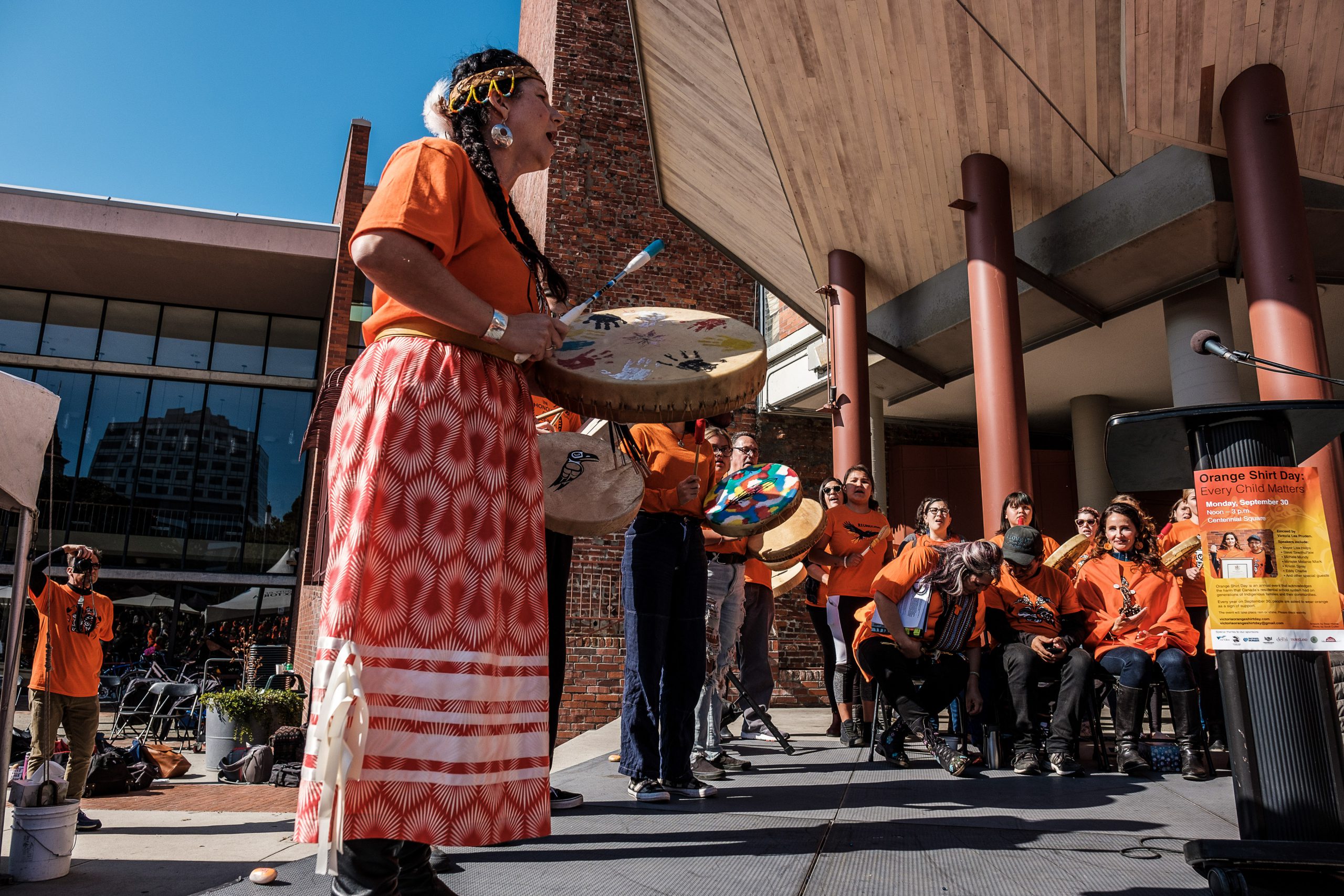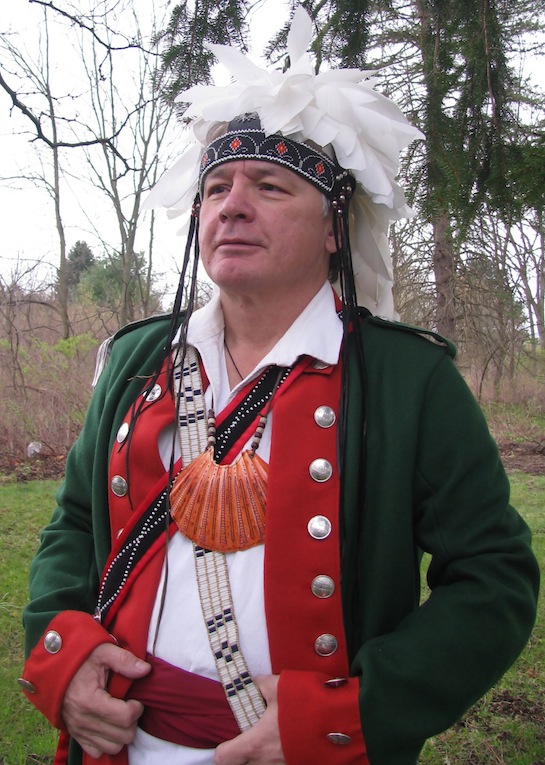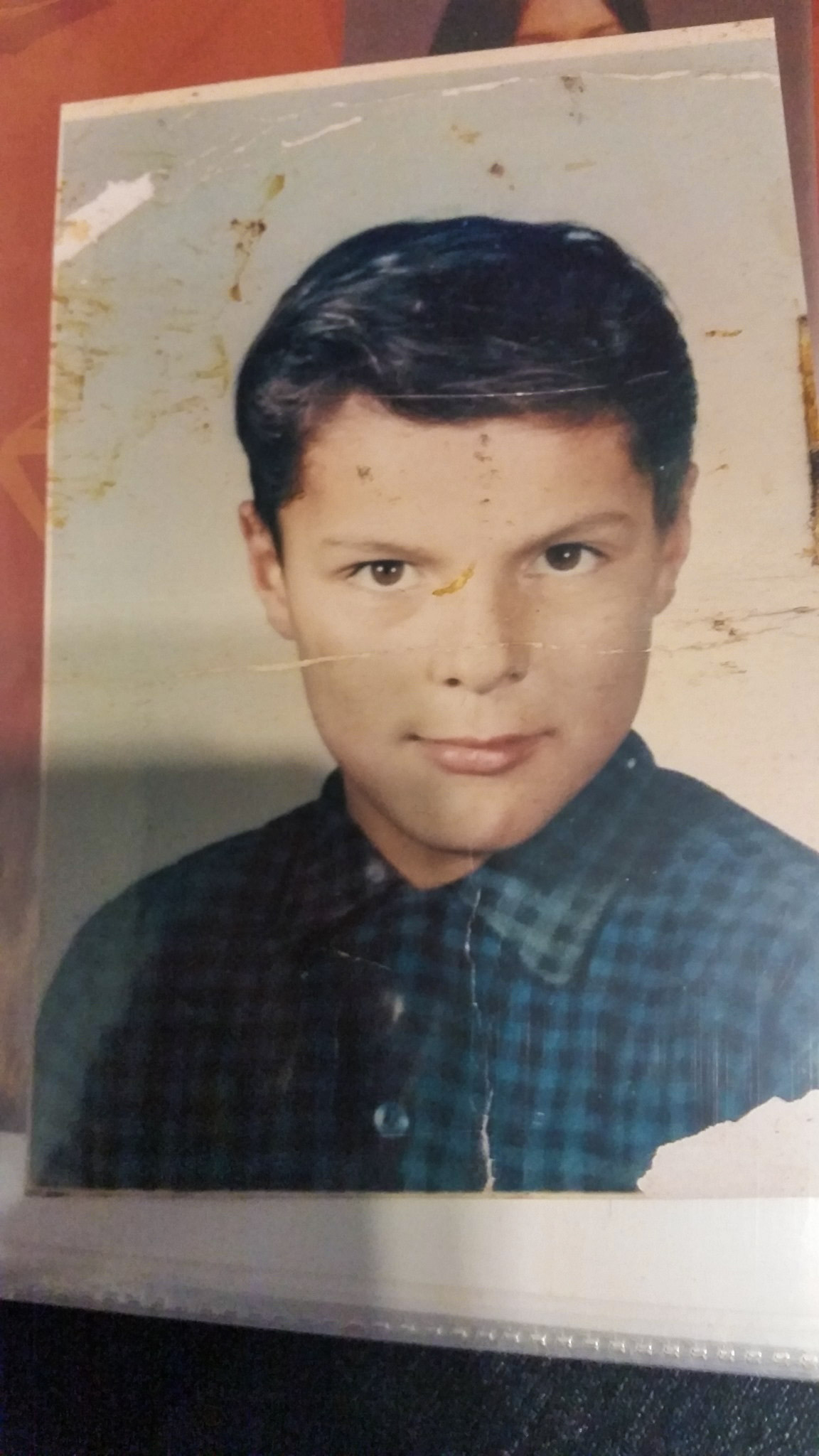Indianz.Com > News > Doug George-Kanentiio: Wearing orange for Native residential school survivors

Photo: Provincial Government of British Columbia
Why Wear Orange?
Monday, August 23, 2021
People ask why the residential-boarding school survivors, their respective families and supporters wear orange. This began in 2013 when Phyllis Jack-Webstad of the Stswecem’c Xgat’tem Nation recalled when she was stripped of her orange shirt when she was taken to a residential school; it has since become a symbol of defiance across the nation.
I asked Mohawk faithkeeper (Roterihonton) Kevin Deer if this must remain so. He said we can turn the color into goodness if we see orange in a different way. Orange, he said, is the color of fire, it is the source of heat during the cold season and light in the dark of night. It is what cooks our food, provides us with comfort and in its flames are the stories of our ancestors who gathered around fire not only for warmth but to socialize, to remember, to dance and sing.
Our wampum is the symbolic fire of the people and each longhouse has its own council fire. Fire has its own life; it breathes oxygen as we do, it can also sing, cackle and roar. The old-timers would always “feed” the fire before they ate by casting a morsel of their meal into the flames. Fire was also emotional and demanded respect, it can be cultivated and spoken to. Fire is a way to reach into the spirit world when tobacco, sage or sweetgrass is given to it.

Doug George-Kanentiio, Akwesasne Mohawk, is a residential school survivor. He was given the number 4-8-2-738. He serves as the
vice-president of the Hiawatha Institute for Indigenous Knowledge. He previously served
as a Trustee for the National Museum of the American Indian, is a former land
claims negotiator for the Mohawk Nation and is the author of numerous books and
articles about the Mohawk people. He may be reached via e-mail at:
Kanentiio@aol.com or by calling 315-415-7288.
Search
Filed Under
Tags
More Headlines
VIDEO: H.R.2400, the Pit River Land Transfer Act of 2025
VIDEO: H.R.3620, the Southcentral Foundation Land Transfer Act of 2025
VIDEO: H.R.2815, the Cape Fox Land Entitlement Finalization Act of 2025
AUDIO: H.R.2400, the Pit River Land Transfer Act of 2025
AUDIO: H.R.3620, the Southcentral Foundation Land Transfer Act of 2025
AUDIO: H.R.2815, the Cape Fox Land Entitlement Finalization Act of 2025
Native America Calling: Native in the Spotlight with Randy Taylor
NAFOA: 5 Things You Need to Know this Week (December 15, 2025)
Chuck Hoskin: Cherokee Nation celebrates milestone in tribal gaming
Native America Calling: A Native entrepreneur’s view of the retail shopping season
VIDEO: H.R.2916, a bill to ratify the Akwesasne Mohawk Land Claim
VIDEO: H.R.2389, the Quinault Indian Nation Land Transfer Act
VIDEO: H.R.2388, the Lower Elwha Klallam Tribe Project Lands Restoration Act
VIDEO: H.R.2302, the Shingle Springs Band of Miwok Indians Land Transfer Act
Native America Calling: Persistence pays off for tribes working to remove disturbing public monuments
More Headlines
VIDEO: H.R.3620, the Southcentral Foundation Land Transfer Act of 2025
VIDEO: H.R.2815, the Cape Fox Land Entitlement Finalization Act of 2025
AUDIO: H.R.2400, the Pit River Land Transfer Act of 2025
AUDIO: H.R.3620, the Southcentral Foundation Land Transfer Act of 2025
AUDIO: H.R.2815, the Cape Fox Land Entitlement Finalization Act of 2025
Native America Calling: Native in the Spotlight with Randy Taylor
NAFOA: 5 Things You Need to Know this Week (December 15, 2025)
Chuck Hoskin: Cherokee Nation celebrates milestone in tribal gaming
Native America Calling: A Native entrepreneur’s view of the retail shopping season
VIDEO: H.R.2916, a bill to ratify the Akwesasne Mohawk Land Claim
VIDEO: H.R.2389, the Quinault Indian Nation Land Transfer Act
VIDEO: H.R.2388, the Lower Elwha Klallam Tribe Project Lands Restoration Act
VIDEO: H.R.2302, the Shingle Springs Band of Miwok Indians Land Transfer Act
Native America Calling: Persistence pays off for tribes working to remove disturbing public monuments
More Headlines
